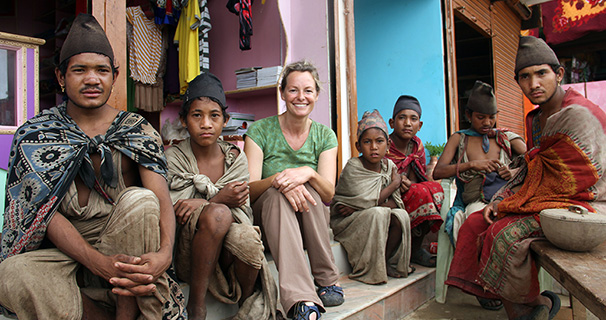Kate Humble: 'I had to work hard to win over the nomads'

BBC2’s three-part series Living with Nomads, sees Kate Humble spend time with three very different groups of nomads in some of the most remote areas of the globe. Along the way, she’ll examine the challenges their unique lifestyles face in the 21st century, including changing climates, habitats, technology and hostility from settled people. (BBC2, Fri)
Kate Humble is one of the most intrepid presenters on TV so it’s no surprise to learn that as a child she wanted to lead a nomadic existence.
What was your childhood dream?
“I wanted to be a proper gypsy with a horse or join the circus. I loved the idea of being self-sufficient and mobile; it seemed a fantastic way of life.”
So you must feel like you’re fulfilling your wish?
"These people move with the seasons and have a better connection with their environment. I wanted to understand their way of life and see whether there is still a place in the modern world for people who live these apparently more simple lives.”
After this series, have you changed your mind about being a nomad?
The latest updates, reviews and unmissable series to watch and more!
“In the West, we think that people living in less technologically advanced ways are not as sophisticated as us, but there are other ways of doing things and these people have an enormous contribution to make. I felt privileged to be allowed into their lives and, yes, I still want to be a nomad.”
Tell us a little bit about the episodes...
“Episode one is the Raute in Nepal. There are only around 150 Raute left, but they are the most difficult people I’ve ever met and that is probably why they still exist. I worked hard to win them over, but we connected when I taught them to sing Old MacDonald. They used to be hunter-gatherers and live separately from settled Nepalis, but their habitat has become squeezed so they’ve had to adapt and come out of the forest."
Why did you find them difficult?
“On the face of it, they now seem like the Nepalese equivalent of scroungers; they set up camp where they like and take anything that’s not tied down and I did see things get confrontational with local villagers. The government wants them to settle, but I felt protective of them because nobody should take away an identity that is so strong.”
What was that like?
“We went to stay with a [Siberian] Nenets family who are reindeer herders and migrate south every winter. I helped round up reindeer and we lived with them in their chums, which are tepees made out of reindeer hide. They completely support themselves, making everything from sledges to clothing, and I was bowled over with admiration because they survive in temperatures as low as -52degC.
“They face pressures because oil and gas have been found in vast quantities in the area, which affects how they migrate, but it does mean there are mobile phone masts and the wife of the family we stayed with could phone her children at boarding school.”
What was it like living in Mongolia for episode three: Herders?
“We lived with an amazing matriarch, Chimid, who was in her 70s and had 10 children. They move seasonally with their sheep, cashmere goats and yaks, but the pressures on their lifestyle come from mining. Lots of people give up being nomads to become miners, but though most of Chimid’s family had university degrees, they kept their nomadic life for its freedom.
“They were remarkable and made me do things that I would never do normally. One morning before 11am I had drunk more than half a bottle of vodka and eaten three different sorts of testicle. They made me cry because they said, 'You are like a sister, not a guest.'"

